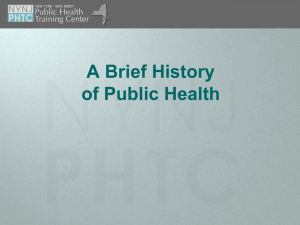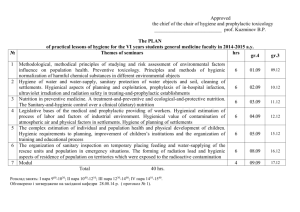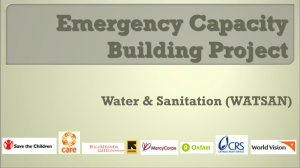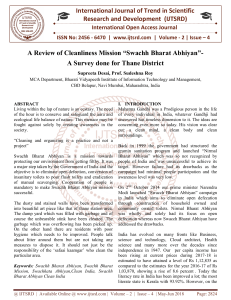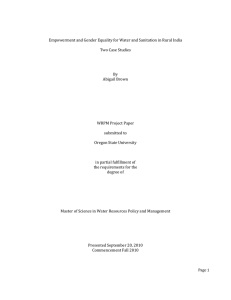OTBA for Class VIII Science
advertisement
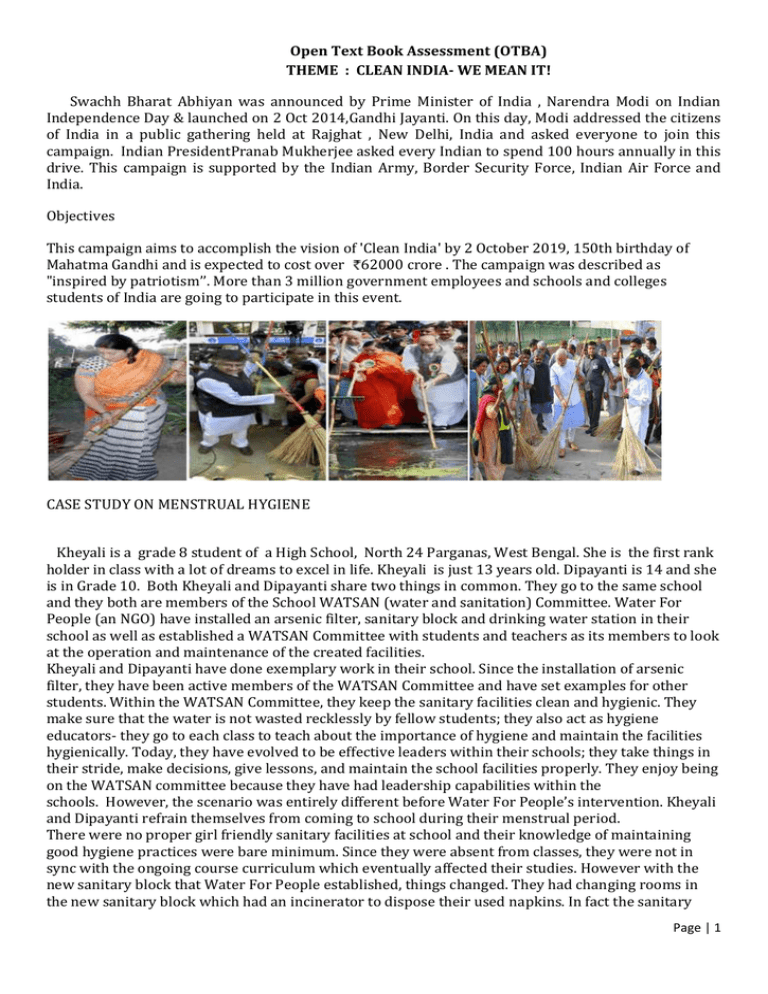
Open Text Book Assessment (OTBA) THEME : CLEAN INDIA- WE MEAN IT! Swachh Bharat Abhiyan was announced by Prime Minister of India , Narendra Modi on Indian Independence Day & launched on 2 Oct 2014,Gandhi Jayanti. On this day, Modi addressed the citizens of India in a public gathering held at Rajghat , New Delhi, India and asked everyone to join this campaign. Indian PresidentPranab Mukherjee asked every Indian to spend 100 hours annually in this drive. This campaign is supported by the Indian Army, Border Security Force, Indian Air Force and India. Objectives This campaign aims to accomplish the vision of 'Clean India' by 2 October 2019, 150th birthday of Mahatma Gandhi and is expected to cost over 62000 crore . The campaign was described as "inspired by patriotism’’. More than 3 million government employees and schools and colleges students of India are going to participate in this event. CASE STUDY ON MENSTRUAL HYGIENE Kheyali is a grade 8 student of a High School, North 24 Parganas, West Bengal. She is the first rank holder in class with a lot of dreams to excel in life. Kheyali is just 13 years old. Dipayanti is 14 and she is in Grade 10. Both Kheyali and Dipayanti share two things in common. They go to the same school and they both are members of the School WATSAN (water and sanitation) Committee. Water For People (an NGO) have installed an arsenic filter, sanitary block and drinking water station in their school as well as established a WATSAN Committee with students and teachers as its members to look at the operation and maintenance of the created facilities. Kheyali and Dipayanti have done exemplary work in their school. Since the installation of arsenic filter, they have been active members of the WATSAN Committee and have set examples for other students. Within the WATSAN Committee, they keep the sanitary facilities clean and hygienic. They make sure that the water is not wasted recklessly by fellow students; they also act as hygiene educators- they go to each class to teach about the importance of hygiene and maintain the facilities hygienically. Today, they have evolved to be effective leaders within their schools; they take things in their stride, make decisions, give lessons, and maintain the school facilities properly. They enjoy being on the WATSAN committee because they have had leadership capabilities within the schools. However, the scenario was entirely different before Water For People’s intervention. Kheyali and Dipayanti refrain themselves from coming to school during their menstrual period. There were no proper girl friendly sanitary facilities at school and their knowledge of maintaining good hygiene practices were bare minimum. Since they were absent from classes, they were not in sync with the ongoing course curriculum which eventually affected their studies. However with the new sanitary block that Water For People established, things changed. They had changing rooms in the new sanitary block which had an incinerator to dispose their used napkins. In fact the sanitary Page | 1 napkins were also made available in school for the girl students. They started to come to school regularly, they started gaining interest in studies, took part in outdoor activities as they were much more comfortable during their menstrual period. Today, both these girls serve as examples to rest of the students. They started taking interest in maintaining the sanitary blocks and making the students aware of the best hygiene practices. Now answer the following questions: i. Who is the president of India? ii. When “Swachh Bharat Abhiyan” commenced? iii. What is the number of government employees and schools and colleges students of India who are going to participate in “Swachh Bharat Abhiyan” iv. Name the NGO which constituted WATSAN committee in Kheyali and Dipayanti’s school. v. Give any two measure which you will take to keep your surroundings clean. vi. What values are shown by Kheyali and Dipayanti? vii. Who announced the “Swachh Bharat Abhiyan”? viii. What is the aim of Swachh Bharat Abhiyan ? ix. Suggest any three measure to be taken for personal sanitation and hygiene? x. Explain the role of WATSAN committee. Page | 2

